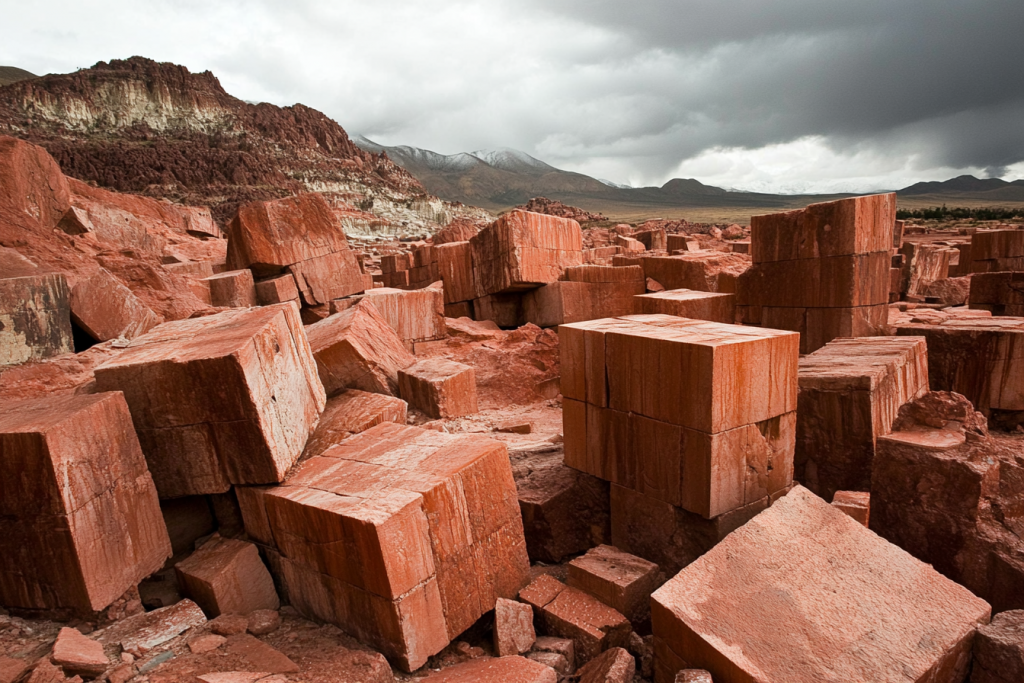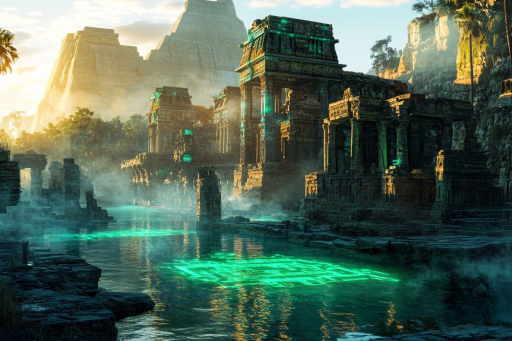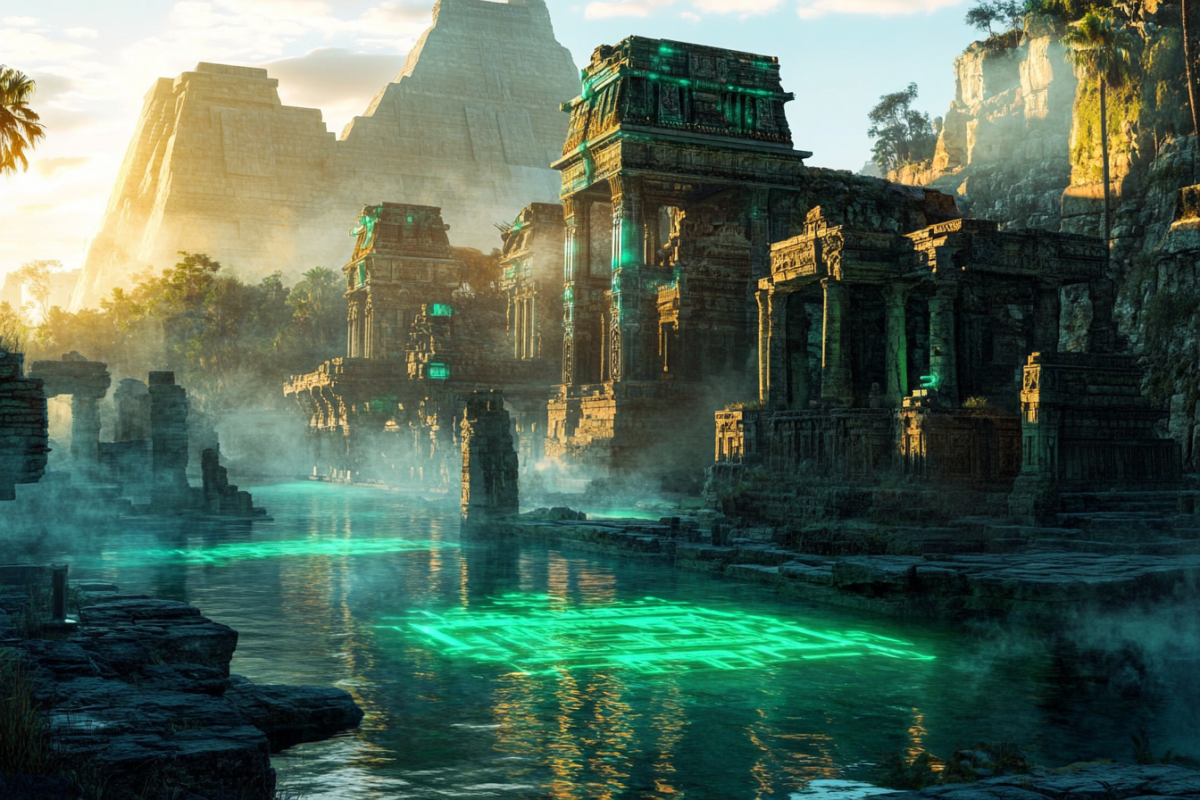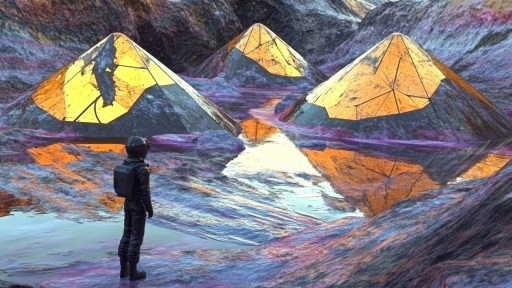
The ancient world was far more advanced than we often give it credit for. From precision engineering that defies modern replication to scientific knowledge that seems centuries ahead of its time, evidence of lost technological mastery is everywhere. The question remains—how did civilizations with limited tools and resources achieve such feats? The deeper we dig, the more we realize that history may not be as straightforward as we once believed.
The Great Pyramid’s Impossible Precision

The Great Pyramid of Giza isn’t just an architectural marvel—it’s a mathematical anomaly. Its alignment with true north is nearly perfect, a feat even modern engineers struggle to replicate without advanced instruments. The massive stones, some weighing up to 80 tons, were transported and positioned with such precision that even a razor blade can’t fit between them. How the ancient Egyptians achieved this without modern machinery remains one of history’s greatest puzzles.
Ancient Batteries of Baghdad

Discovered in the 1930s, the Baghdad Batteries are clay jars containing copper cylinders and iron rods—potentially the world’s first known batteries. When filled with an acidic liquid, they could generate a small electric charge, leading experts to speculate they were used for electroplating gold onto silver. If true, this would mean ancient civilizations harnessed electricity over a thousand years before Benjamin Franklin’s famous experiments. The purpose of these artifacts remains a debated mystery.
The Antikythera Mechanism: A Computer from Antiquity

Found in a shipwreck off the coast of Greece, the Antikythera Mechanism is a sophisticated clockwork device dating back over 2,000 years. It accurately tracked astronomical movements, eclipses, and planetary positions, functioning like an ancient analog computer. The level of craftsmanship suggests knowledge of gears and mechanics that wouldn’t be seen again for more than a millennium. How did the ancient Greeks develop such advanced technology, and what other lost devices might have existed?
Vitrified Forts of Scotland

Scattered across Scotland are ancient stone forts with walls that appear to have been melted together. The extreme heat needed to fuse rock in this way suggests a lost technology or unknown method of warfare. Some researchers propose massive fires, while others speculate about a forgotten process of high-energy fusion. Whatever the truth, no definitive explanation has been found for how these ancient builders achieved such a feat.
India’s Rust-Proof Iron Pillar

Standing in Delhi for over 1,600 years, the Iron Pillar of India is a metallurgical wonder. Unlike most iron objects, which corrode over time, this 23-foot pillar has barely rusted, despite centuries of exposure to the elements. Scientists believe a unique combination of iron, phosphorus, and environmental factors created a protective layer, but how ancient metalworkers achieved such durability remains uncertain. Did they possess knowledge of rust-resistant alloys far ahead of their time?
The Lost Cement Formula of Rome

Roman concrete has stood the test of time—literally. Unlike modern cement, which erodes over centuries, ancient Roman structures like the Pantheon and aqueducts remain remarkably intact. Researchers discovered that the secret lies in a self-healing reaction triggered by volcanic ash, but even today, we struggle to replicate it exactly. If rediscovered, this lost formula could revolutionize modern construction.
Machu Picchu’s Anti-Seismic Engineering

Perched high in the Andes, Machu Picchu was built with a method known as “ashlar masonry,” where massive stones are cut so precisely they fit together without mortar. This technique allows the city to withstand powerful earthquakes, as the stones shift and resettle without collapsing. The Inca had no written language and no wheels—so how did they develop such a sophisticated seismic-resistant architecture?
Ancient Skull Surgery That Worked

Archaeologists have found evidence of successful trepanation—skull surgery—in civilizations thousands of years old. Ancient surgeons in Peru, Egypt, and even Europe drilled or scraped holes into the skull to treat injuries or neurological conditions. Remarkably, many patients survived, as shown by signs of bone regrowth. How did these early doctors develop the knowledge to perform brain surgery without modern medical tools?
The Mysterious Nazca Lines: Ancient Geoglyphs or Aerial Messages?

The massive Nazca Lines, etched into Peru’s desert, depict animals, geometric shapes, and human-like figures—some stretching over 1,200 feet. These intricate designs can only be fully appreciated from the sky, yet they were created over 2,000 years ago when humans supposedly had no means of aerial observation. Were they religious symbols, astronomical markers, or something else entirely?
China’s Hidden Mercury Rivers

The tomb of China’s first emperor, Qin Shi Huang, is said to contain rivers of flowing mercury, based on ancient texts. Modern scans suggest high mercury levels in the soil, supporting these accounts. The substance was believed to grant immortality, yet ironically, it may have poisoned those who handled it. If these underground rivers truly exist, they would represent one of the most astonishing engineering feats of the ancient world.
The Impossible Precision of Puma Punku

High in the Bolivian Andes, the stone ruins of Puma Punku feature laser-like precision that defies explanation. Gigantic blocks of andesite, one of the hardest stones on Earth, were cut with perfect right angles and interlocking designs. Modern tools would struggle to replicate this level of detail. How an ancient civilization achieved such precise stonework—without metal tools—remains an enigma.
Have We Forgotten More Than We Remember?

We often assume that human progress moves in a straight line, with technology constantly improving from primitive to advanced. But history suggests otherwise—ancient civilizations possessed knowledge and abilities that still baffle modern experts. Could we have lost entire chapters of technological progress to time, war, and disaster? Perhaps the greatest mystery isn’t what they built—but what we no longer understand.





